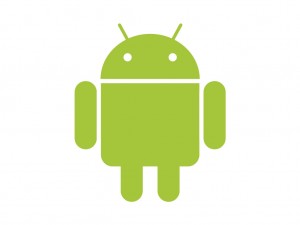 Android is an open source, Linux-based operating system designed for touch screen mobile phones and tablets by Google, in conjunction with the Open Handset Alliance.
Android is an open source, Linux-based operating system designed for touch screen mobile phones and tablets by Google, in conjunction with the Open Handset Alliance.
Since Android is open source, manufacturers don’t have to pay Google to use it, and that they’re free to modify it. Android has a large community of developers writing applications that extend the functionality of devices, written primarily in a customized version of Java.They are available for download through Google Play or third-party sites. In September 2012, there were more than 675,000 apps available for Android, and the estimated number of applications downloaded from Google Play was 25 billion.
Android itself contains the functions that are vital to using a mobile phone, including the phone dialler, text messaging client and phone number storage. Google also provides some additional apps, including a Gmail email client, Google Maps (which features free turn-by-turn satellite navigation) and YouTube.
Android has many media features built in, so it’s easy to load your music and movies onto your device and play them without problems. Most common audio file formats are supported, as are some of the most often-used video formats. Many manufacturers also add support for some of the less-common formats.
Beyond that, you can also buy or download for free many other apps to enable your phone or tablet to do more. You can get these apps from the Android Market, or from other sources, such as GetJar or Amazon’s Appstore. They can also be loaded onto an Android device manually, without using a store.
These apps can include ways to use Facebook, create documents, access online storage services such as Dropbox, or there’s a huge range of games available. Some social networks are integrated into certain Android phones by default, enabling you to connect someone’s contact information in your phone to their Facebook account, for example, and automatically pull through details such as their birthday.
By the end of 2010 Android had become the world’s leading smartphone platform, overtaking Symbian which held its record for years.
SOURCES: WWW.TECHRADAR.COM & WWW.WIKIPEDIA.ORG
 Android is `n Linux-gebasseerde bedryfstelsel ontwerp vir raakskerm tablette en selfone. Die oopbronsagteware is ontwerp deur Google, in samewerking met die Open Handset Alliance.
Android is `n Linux-gebasseerde bedryfstelsel ontwerp vir raakskerm tablette en selfone. Die oopbronsagteware is ontwerp deur Google, in samewerking met die Open Handset Alliance.
Aangesien Android oopbronsagteware is, hoef vervaardigers nie kostes aan Google te betaal om dit te gebruik nie en kan dit ook aangepas en verander word om aan die vervaardiger se behoeftes te voldoen. Daar is `n groot gemeenskap van Android ontwikkelaars wat werk aan toepassings wat die funksionaliteit van Android-toestelle kan verbeter en uitbrei. Hierdie toepassings (of “toeps” soos ek onlangs in `n tydskrif gelees het!) kan afgelaai word op Google Play of ander derde-party webwerwe. Teen September 2012 was daar reeds meer as 675,000 toepassings beskikbaar vir Android-fone en die geskatte getal toepassings wat afgelaai is van Google Play was 25 biljoen.
Hierdie toepassings sluit maniere om dokumente te skep, toegang tot aanlyn stoorspasies soos Dropbox en natuurlik `n magdom speletjies om jou besig te hou as jy verveeld is. Soos met alle deesdae is sosiale netwerke `n integrale deel van Android. Sommige sosiale toepassings is outomaties geintegreer by Android-fone.
Die Android bedryfstelsel self is verantwoordelik vir basiese funksies van die foon, soos on oproepe te maak, sms’e te stuur en foonnommers te stoor. Omdat Android deur Google ontwerp is, is die klem vanselfsprekend ook meer op Google-toepassings. Gevolglik sal jy ook `n handige Gmail-kliënt, Google Maps (met gratis satelliet-navigasie!) en YouTube op jou Android-foon kry. Dis natuurlik ook maklik om al jou multimedia met jou saam te dra so jy kan musiek luister en fotos kyk waar jy ookal is.
Teen die einde van 2010 was Android reeds die wêreld se leidende slimfoon platform, groter as Symbian wat vir jare die toonaangewende bedryfstelsel was.
BRONNE: SOURCE: WWW.TECHRADAR.COM & WWW.WIKIPEDIA.ORG

